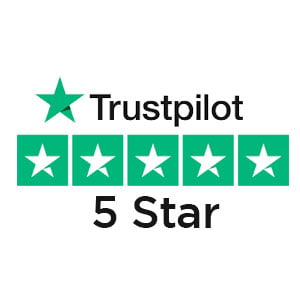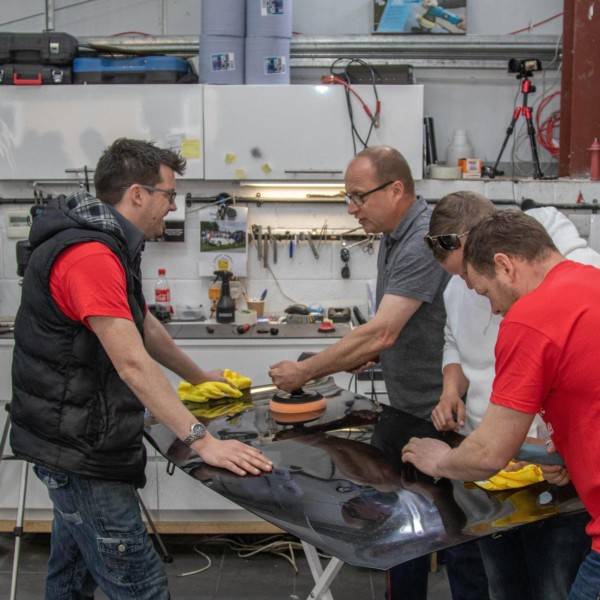Psychological Pricing Strategy
It sounds devious and sinister, doesn’t it? But psychology is both a basic and an advanced pricing and sales tool, which can be used to great effect to help simplify customer choices and make your business stand out.
Our pricing advice has and will always be, on a basic level, adding up your costs, time and materials, adding a bit on top for growth and investment, and dividing that by ~75% of the time you expect to work. This covers your costs, allows for growth, and if you meet your work targets, gives you a 25% bonus effectively, whilst not leaving you short if you get a slow month.
Psychological pricing allows for more flexibility and reactivity to what the market is doing though, and is a great tool to gain new customers who are perhaps on the fence.
So what is it?
It’s any method that plays on a human compulsion to react. For example, why do you think you see items marked as £X.99? That 1 penny difference puts the consumer in the mindset of the LOWER price bracket, so whilst they may have been looking to spend £60 on a product, psychologically, £69.99 looks like less of a stretch than £70. £99 seems like a greater deal than £100, doesn’t it? You can probably think of a few times you’ve pushed the boat out at, say £99, whereas £100 may have pushed something past what you valued a product at in hindsight. Enough to push a few customers into completing a booking perhaps? This is known as “Charm Pricing”.

Some more examples:
Buy two visits, get the third half price.
It’s enough to get a customer through the door and book a second. By the third “half price” visit, they’re probably on board anyway as a long-term customer, so it’s a good cementing point – as long as at the end of the third job, you book their next visit in.
Prestige Pricing Strategy
“Reassuringly Expensive”

This is the practice of keeping prices higher than the competition, as this strategy can work in attracting customers who link higher prices with the superior quality of the products. It’s risky as you are in peril of putting off otherwise healthy customers who have an eye for true value, and alienating those with, perhaps shallower pockets, but it does serve to attract a narrower, but appealing – at least from a business income point of view – market sector.
This strategy works mainly for products that appeal to certain customers. For example, the strategy is used by luxury clothing brands to put the picture in the mind of their customer about the excellent quality of the products and the lifestyle it is associated with. It may be true of the service you provide, but its success is going to depend on your ability to access those who can afford the higher prices.
Artificial Time Constraints
 Put a clock on a purchase and you are forcing a snap, or impulse decision. “New customer booking by midnight tonight get 10% off valets for the next 3 months”. If someone has been thinking about engaging a valeter, this sort of offer may be enough to get their feet under the table with a cushy discount. Once they are on board, it’s up to you to retain their business, but for a 90% rate on three months of jobs, it’s probably worthwhile running these every so often just to get new customers through the door, even if they only stay for those three months. It’s also a psychological barrier for competitors in the pricing time as the customer will want to see out the benefits.
Put a clock on a purchase and you are forcing a snap, or impulse decision. “New customer booking by midnight tonight get 10% off valets for the next 3 months”. If someone has been thinking about engaging a valeter, this sort of offer may be enough to get their feet under the table with a cushy discount. Once they are on board, it’s up to you to retain their business, but for a 90% rate on three months of jobs, it’s probably worthwhile running these every so often just to get new customers through the door, even if they only stay for those three months. It’s also a psychological barrier for competitors in the pricing time as the customer will want to see out the benefits.
Sometimes creating attractive offers means thinking outside the box, but whatever offers you come up with, remember that they always have to cover your costs, pay you a wage, and make financial sense long term. Offering 40% off when business is slow makes no sense when you are working to a 20% margin – the argument that any income is better than no income is fair, but can be incredibly damaging in the long term as it can devalue your services, making clients reluctant to pay full price after an offer ends. Far better is to offer a smaller discount to secure long-term work – such as 10% off when booking 4 washes. It’s a benefit for them, and it costs you the same as 40% off one wash, whilst adding 3 fully paid jobs afterwards, keeping the offer attractive, but financially sound.
This only scrapes the surface of pricing psychology. Go deep enough and there is research that shows people react better to prices with the number 7 in it – so charging £170 is actually more favourable than £150 in some cases. Not working in rounded numbers gives the impression of a thoroughly worked out quotation and customers are less likely to haggle or challenge pricing – so £5.54 will be more successful that £5.50 as it implies a finality.
You can probably see how much you encounter it in day-to-day life. It’s not a sneaky tactic, it’s sealing a sale – no more than that, and it’s another way of getting customers through your door in the first place and showing them what you can achieve.


